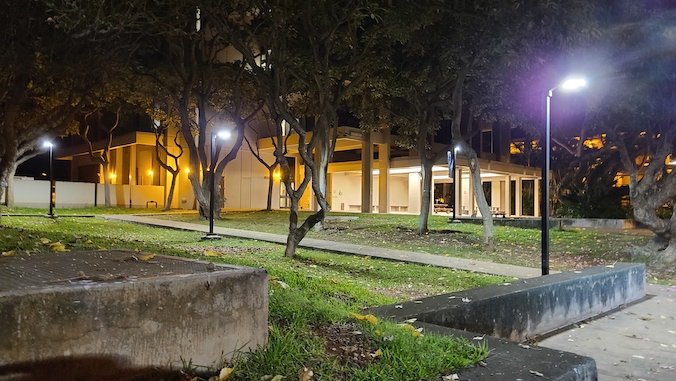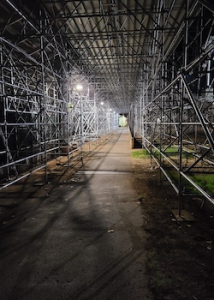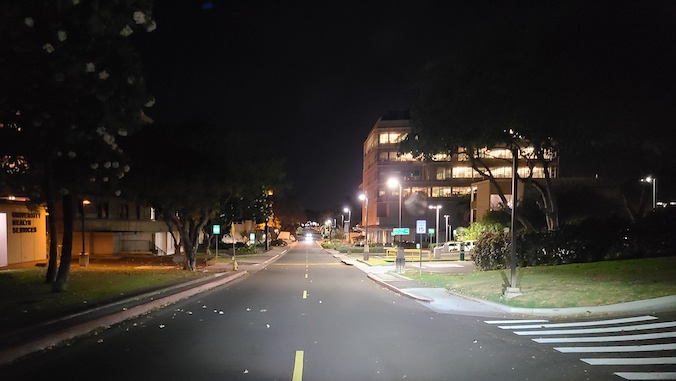
The University of Hawaiʻi at Mānoa will shine a little brighter, use less energy and be safer at night after a major project to upgrade the lighting poles along the upper campus main roadways with new energy-efficient LED lights is completed. The UH Mānoa Office of Campus Operations and Facilities will begin replacing 150 lighting poles, fixtures and foundations on East-West Road and Maile Way in October in a project expected to take about 18 months.
“This project will not only make our campus safer with better lighting, it is another step toward UH’s goal of being net-zero (producing as much energy from renewable sources as consumed) by 2035,” said Jan Gouveia, UH vice president for administration. “In the last 11 years, we have saved more than 50 million kilowatt-hours (KWh) through projects like these and by redesigning and reworking of systems.”

The new LED lighting system will use 64% less energy, with an estimated annual energy consumption of 29,346kWh compared to 82,346kWh with the current High-Intensity Discharge light fixtures. Additionally, LEDs have a longer lifespan, and require less maintenance and fewer replacements.
UH Mānoa completed similar exterior lighting upgrades over the last several years, which yielded better lighting and energy savings of millions of kilowatt hours annually. Those projects included the law school library courtyard and the parking lots at the Pacific Biosciences Research Center, Center for Korean Studies, Kennedy Theatre and Spalding Hall, among others.
- Related UH News story: UH Mānoa net zero heroes improve energy efficiency, track progress, March 1, 2021
The LEDs have automated time-clocks and turn on from 6 p.m.–7 a.m. daily, for the safety and benefit of students, faculty and staff commuters who traverse the campus at night and during the early morning hours. Their motion-activated illumination controls also help to increase safety and save energy at the same time.
“Reducing our energy use has helped save the university millions of kilowatt-hours annually, and makes for a more sustainable Mānoa campus in the future,” said UH Mānoa project manager Daren Lui.
Construction is expected to begin in late October 2022 and will affect pedestrian and vehicular access along East-West Road and Maile Way roadways. Project completion is expected by January 2024.
See the UH Office of Sustainability’s Energy Efficiency website for information on multiple energy savings projects on campus.


